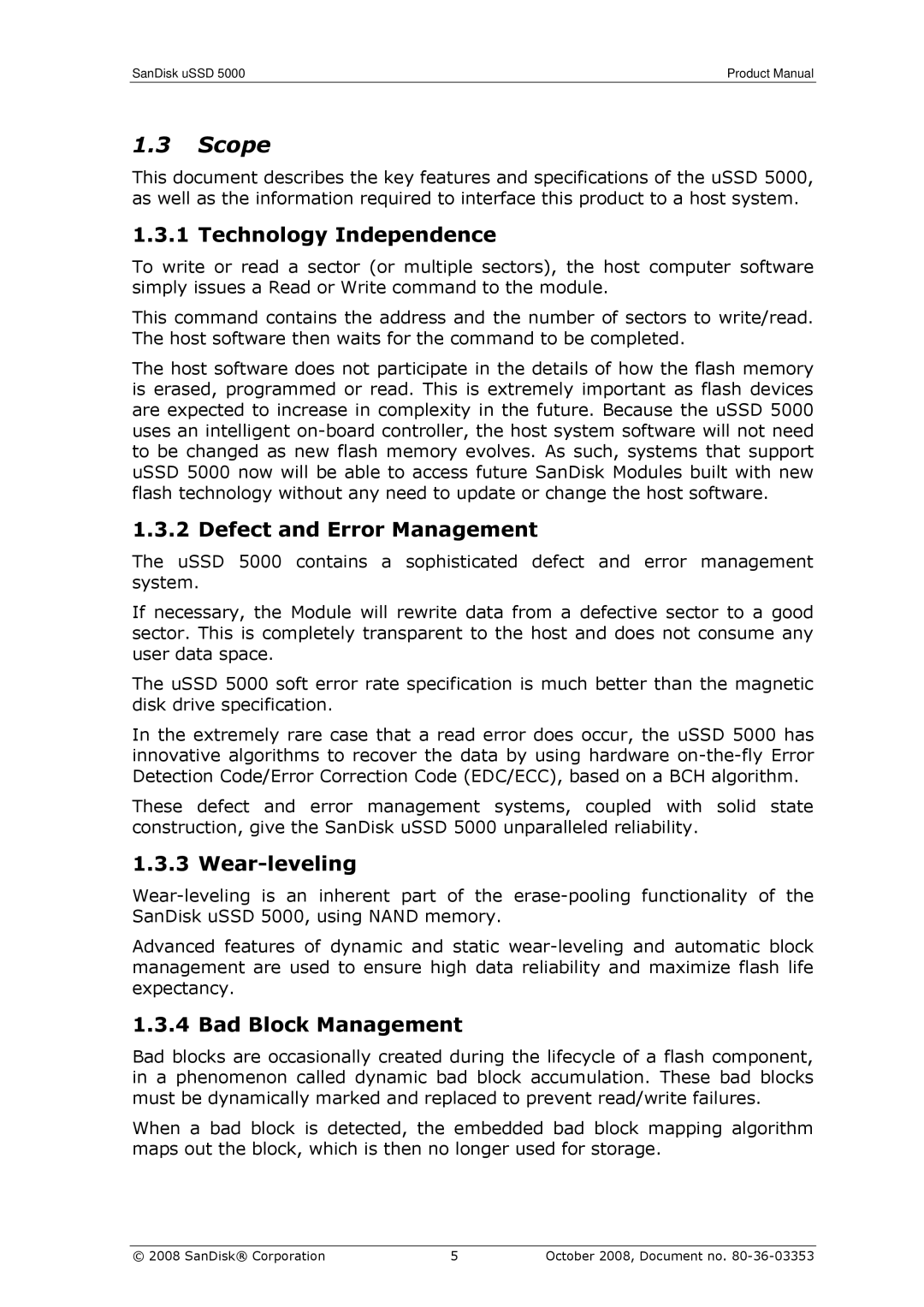SanDisk uSSD 5000 | Product Manual |
1.3Scope
This document describes the key features and specifications of the uSSD 5000, as well as the information required to interface this product to a host system.
1.3.1 Technology Independence
To write or read a sector (or multiple sectors), the host computer software simply issues a Read or Write command to the module.
This command contains the address and the number of sectors to write/read. The host software then waits for the command to be completed.
The host software does not participate in the details of how the flash memory is erased, programmed or read. This is extremely important as flash devices are expected to increase in complexity in the future. Because the uSSD 5000 uses an intelligent
1.3.2 Defect and Error Management
The uSSD 5000 contains a sophisticated defect and error management system.
If necessary, the Module will rewrite data from a defective sector to a good sector. This is completely transparent to the host and does not consume any user data space.
The uSSD 5000 soft error rate specification is much better than the magnetic disk drive specification.
In the extremely rare case that a read error does occur, the uSSD 5000 has innovative algorithms to recover the data by using hardware
These defect and error management systems, coupled with solid state construction, give the SanDisk uSSD 5000 unparalleled reliability.
1.3.3 Wear-leveling
Advanced features of dynamic and static
1.3.4 Bad Block Management
Bad blocks are occasionally created during the lifecycle of a flash component, in a phenomenon called dynamic bad block accumulation. These bad blocks must be dynamically marked and replaced to prevent read/write failures.
When a bad block is detected, the embedded bad block mapping algorithm maps out the block, which is then no longer used for storage.
© 2008 SanDisk® Corporation | 5 | October 2008, Document no. |
